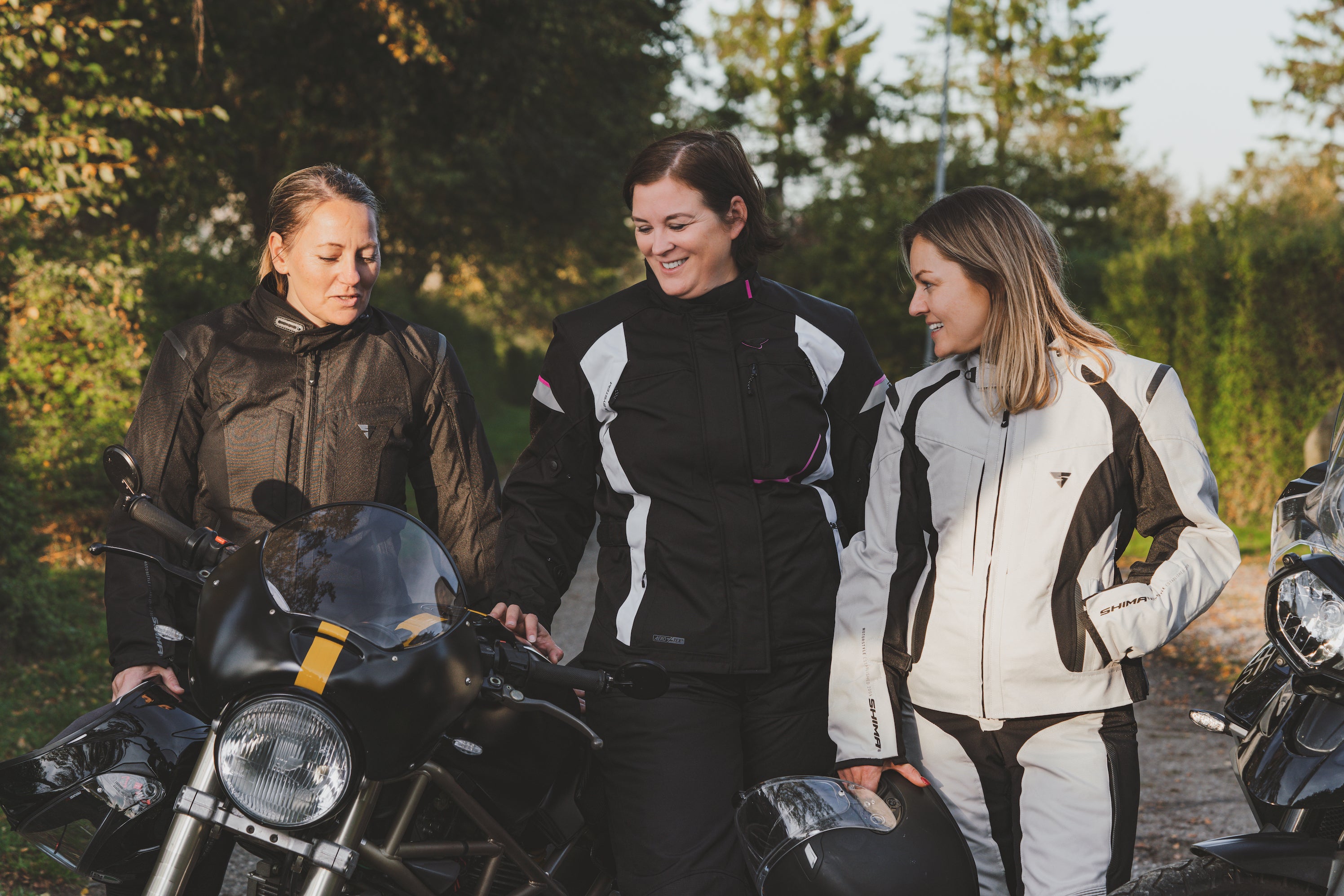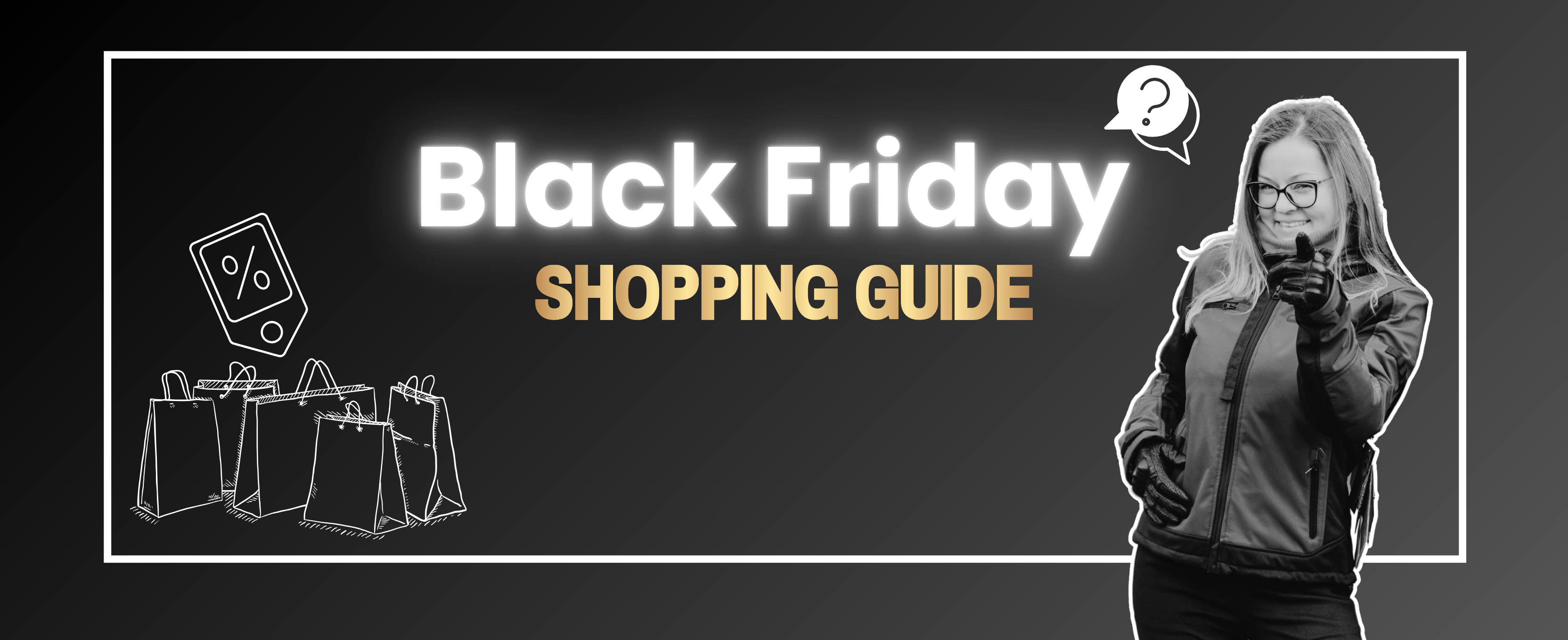All those beautiful women’s motorcycle jackets, jeans, and other amazing stuff we can find nowadays! Shopping for motorcycle clothing can be a difficult task (especially in the Moto Lounge 😉). How to choose when you like them all (or many)? And how to know that it will be your right pick?
The looks of the clothing are (of course!) important, but when shopping for motorcycle gear, the first thing to consider is your riding style. Are you a casual rider who mainly takes short trips on the bike to the ice cream shop or areas around? Do you commute to the city on your motorcycle? Are you a touring fan taking your motorcycle for long trips across the country or abroad? Or maybe even an adventurous rider who loves extreme off-riding or can be often found on the race track?
Motorcycle clothes are meant to protect you if unfortunate situations appear, minimizing the risk of injuries. And even though there are many unforeseen circumstances and conditions that could play a role in such situations, your riding style and habits are some of the most important ones. Therefore, you need to consider it when choosing your mc clothing set.
The EN 17092 standard under the CE certification is here to help us during the process by providing guidance on the protectiveness classes of motorcycle garments. So how does it do it?
The EN 17092 is the most recent technical standard by which to obtain the CE Certification of protective motorcycle apparel for motorcycle trousers, jackets, and one-piece suits. It explains what tests need to be performed and how; and it identifies 5 classes of protectiveness the product can achieve: AAA, AA, A, B, and C. These protection classes identify the type of usage and levels of protection the garment provides to the rider.
Simply said, it classifies clothes (trousers, jackets, and one-piece suits) into different groups and gives them a rating (AAA, AA, A, B, or C) based on how well they are projected to protect us in case of an accident.

Let’s look into the protectiveness classes in more detail:
Class AAA
If the garment gets a AAA class rating, it is considered to be a heavy-duty protective garment, meaning it is the highest level of protection with which the garment can take on the highest level of risk. Some common examples are one-piece or two-piece suits. Clothes classified AAA offer maximum protection, but are often also heavier and less comfortable to use. Nowadays though we do have some exceptions when a garment can be both very comfortable and light to wear but also offer AAA protection. A great example is MotoGirl women’s motorcycle Sherrie leggings.
Class AA
Class AA is given to the medium-duty protective garments. AA is the second-highest level of protection, to take on the wide range of risks that motorcycle riding can present. Some common examples can be garments designed to be worn by themselves or over other clothes. Most of the touring gear is usually AA classed, as well as some casual riding motorcycle clothes, such as for example Pando Moto Kissaki Dyn women’s motorcycle jeans, Shima Renegate lady motorcycle shirt, most Moto Girl jackets, such as Valerie, Jodie, Louise, and other clothing. Thanks to the newest technology and the development of the contribution of materials, we can enjoy lighter, more comfortable, and better-looking motorcycle clothes that offer a high level of protection. You might not be able to see it - but trust me, you would feel! And that is what matters!
Class A
Class A identifies light-duty protective garments. It is the third-highest level of protection. Protectiveness is less than the previous classes, but clothes are often lighter and more comfortable to wear on a daily basis. Think the gear for urban riding, casual MC trips, etc.
The majority of motorcycle clothes would have an A rating, as it provides a great balance between comfort and protection on the road.
Class B
Class B is given to the light-duty abrasion protection garments. The abrasion aspect is important to remember here. In the class B garments, the level of protection against abrasion is equivalent to Class A, but they come without impact protectors. For example, jeans or some jackets without impact protection might fall into this class. It means class B garment will give you the same level of protection if you add impact protectors to it. Some manufacturers would consciously choose to test some products only for the class B, to be able, for example, to offer you a less pricey alternative where you can use the impact protectors you already own or purchase them separately.
Class C
Class C is the least protective class, and these are clothes, so-called “protection containers” - items that are designed to hold one or more impact protectors. Therefore they are garments that can resist impact but not abrasion. A few examples of class B products could be underwear with integrated impact protectors or the mesh under-suit that have impact protection for off-roading.
So does that mean I should only choose AAA - the safest rated - clothes?! Not at all!
The degree of risk or hazard that a motorcyclist will face is closely linked to the type of riding and the nature of the potential accident. Therefore, you should always choose the gear that matches your riding activity and risks. While AAA might be absolutely necessary for some - A can perfectly serve the others 😉



